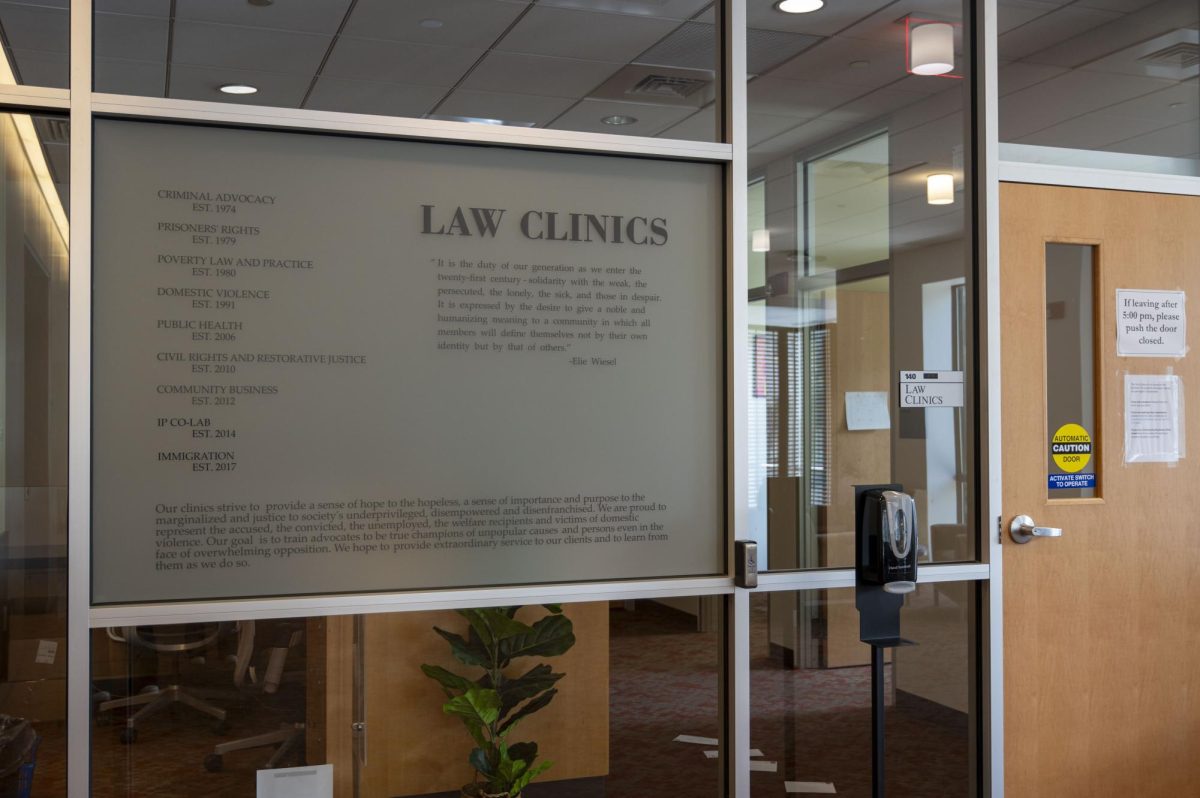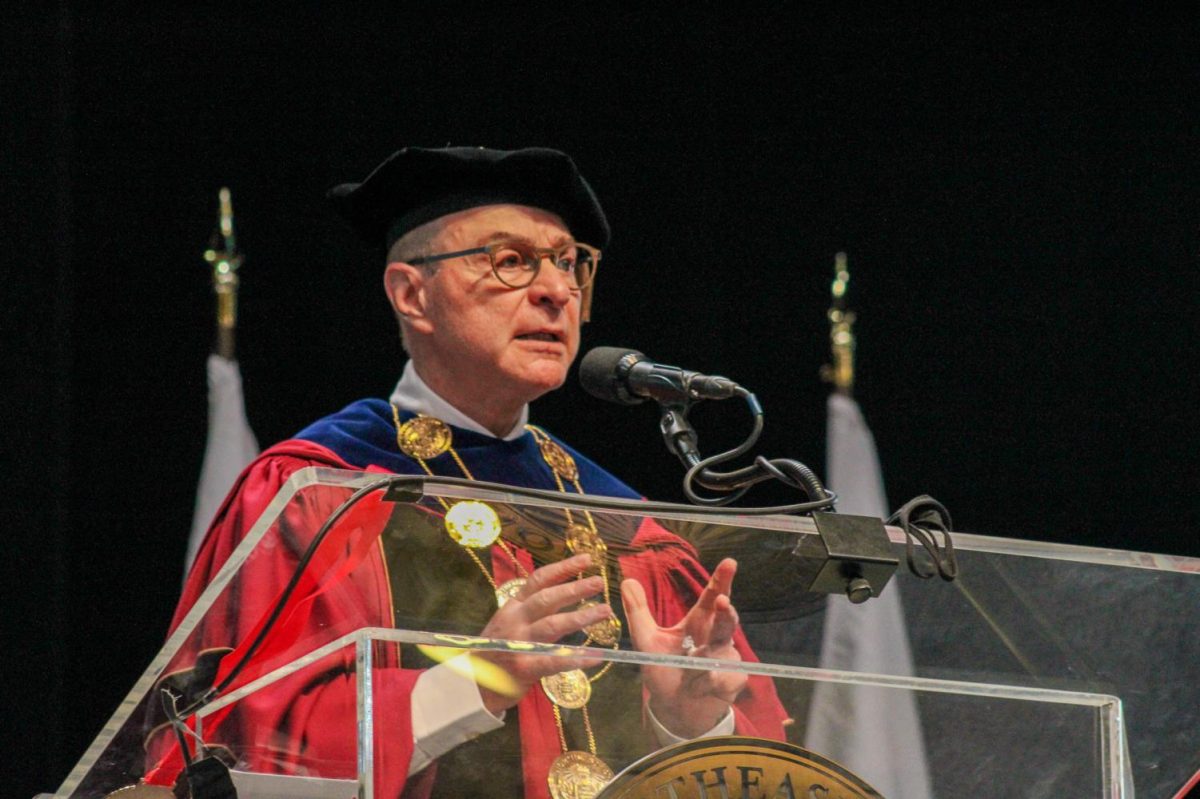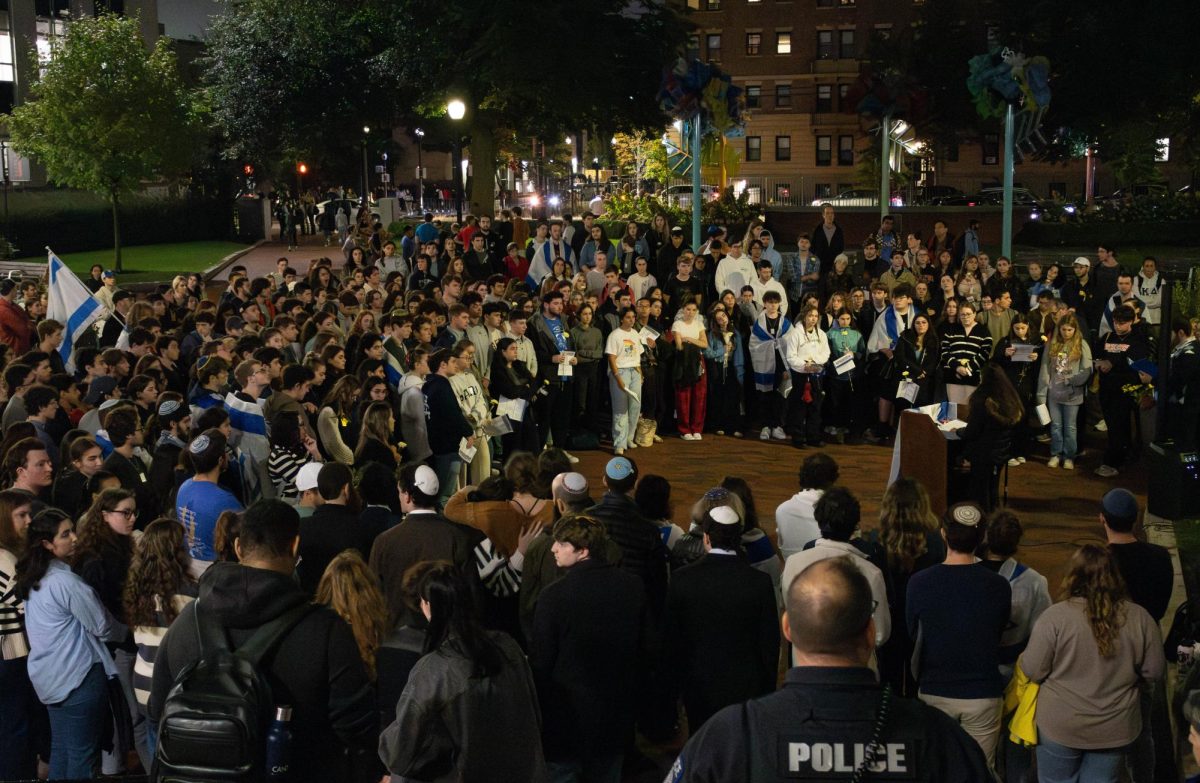By Gal Tziperman Lotan
The Fenway has developed into a notorious, nighttime danger zone. Some students who may be walking through on their way to and from the AMC Fenway movie theatre, Fenway Park or co-op jobs are sometimes victimized, police and Northeastern officials said.
“We’ve had a lot of Northeastern students get accosted walking through the park at night,” said Captain William Evans, from D-4 of the Boston Police Department (BPD), which covers the Fenway area.
Since September, one Northeastern student reported being assaulted in the Fenway, said James Ferrier, associate director of Public Safety at Northeastern.
In response to such incidents, the BPD installed four emergency phone stations in the Fenway during early September as part of a city-wide initiative to keep parks safe. “The Boston Police and Parks and Recreation Departments have worked hard to make these new call boxes a reality,” Mayor Thomas Menino said in a press release announcing the initiative in mid-August. “We will continue to do all we can to make sure the city’s parks remain safe places for recreation and relaxation for the many residents and visitors who use our great public spaces.”
The luminous, cylindrical stations are nine feet tall and are painted “safety blue.” In the stations, a red one-touch button triggers an automatic 911 call and features a speakerphone attached to a silvery surface at chest-level.
Since its inception, some have seen the system being put to use, although, in one instance, the system was not as efficient as hoped. John Wallace, originally from Revere, who has been living in the Fenway area for a month, said he saw a man who “got jumped” lying on the path 70 feet away from the emergency phone outside the Kelleher Rose Garden three weeks ago around 9:30 p.m.
“The guy was just lying there,” Wallace said. “Someone pushed the blue light and it took 40 minutes for the cops to come.”
MacNeil, from District D-4, was unable to confirm or deny the incident and said documented tracking of calls made with the Emergency Phone System will begin next month. But MacNeil said “violent crimes happen less” in the Fenway area compared to the rest of the district, which also encompasses the Back Bay, South End and Lower Roxbury.
Along with the stations placed in the Fens, fifteen more emergency phones were installed in the Boston Common, Elliot Norton Park, East Boston’s Central Square, Malcolm X Park, Roberts Play Ground and Jamaica Pond, as part of the Emergency Phone System.
Still, some students who walk through the Fenway late at night say passersby are susceptible to assaults there. In such cases, students could use their cell phones to call the police. But if students are robbed of their cell phones during an assault, the stations could be useful, said Ferrier, director of Public Safety.
“A vast percentage of college students carry cell phones, but the blue light phones are handy if you just got ripped off,” he said. “We still would urge people to walk around the Fenway in the well lit, heavily traveled areas.”
Public safety officials encourage students to travel in groups. But even this is not always a safeguard to disturbances. Alex Snow, a freshman journalism major, said he was accosted while walking through the Fens with several friends last month.
As the group walked toward Boylston Street around 10:30 p.m. they heard a woman scream, “Bitch!” They turned around to see a woman following them, Snow said.
Snow described the woman as being about six feet tall with blonde hair, wearing a short skirt.
“She got behind me and started stomping,” he said. Imitating the woman’s raspy voice, he continued, “‘Knife ’em, knife ’em good,’ she was saying while gesturing with her hands.”
Had there been a emergency light station close-by, Snow said, he would not have used it because the woman seemed like a “harmless, drugged-up weirdo.” But if the woman made violent contact, Snow said, he would have used the emergency phone.
The emergency phones in the Fenway are located near Mother’s Rest playground near Boylston Street, between the Kelleher Rose Garden and basketball courts, along Park Drive outside the Victory Gardens and on Park Drive close to Queensbury Street, said D-4 Community Service Coordinator Carolyn MacNeil.








